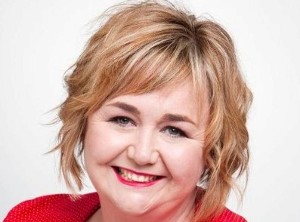Govt makes KiwiBuild loans easier, drops 100,000 homes target
The government is dropping its target to build 100,000 affordable homes over a decade but will keep the name of its troubled flagship policy - KiwiBuild - while making it easier for people to finance their way into home ownership through the scheme.
Wednesday, September 4th 2019, 1:39PM

Megan Woods
The policy 'reset' announced today by Housing Minister Megan Woods includes a win for the Green Party, with the creation of a new 'shared ownership' initiative that will allow a would-be homeowner to buy part of a house, in partnership with "long term institutional investors", including community housing providers and iwi.
Some $400 million of the $1 billion KiwiBuild revolving fund will be ear-marked for this initiative, which roughly matches the widely held expectation that the policy reset would include the 'rent-to-own' scheme promised to the Greens in the confidence and supply agreement signed with the Labour Party to help form a government after the 2017 election.
"This new scheme will help struggling families buy a share of a house, reducing both the deposit needed to get a mortgage, and their repayments," Green Party leader Marama Davidson said in a statement.
The reset still firmly backs KiwiBuild's original concept of encouraging New Zealanders into home ownership rather than renting, and has two key new ways of helping that happen.
Firstly, the requirement for a 10 percent deposit falls to 5 percent when applying for what has been called until now a KiwiSaver HomeStart loan. It will now be known as the First Home Grant.
Secondly, there will now be no cap on the size of a First Home Loan that can be accessed when a group of people clubs together to buy a home together.
The reset also reduces the amount of money a private developer can expect to receive from the government if a house fails to sell and the developer triggers their underwriting agreement with the government.
It also seeks to prevent any repeat of early KiwiBuild mistakes, which saw affordable homes built in places like Wanaka, Te Kauwhata, and Canterbury, which then failed to sell.
Woods said those homes would now be sold on the open market, implicitly at a loss, "allowing us to reuse the government capital to get more developments underway where there is clear demand".
The 100,000-home target of her predecessor, Phil Twyford, was being dropped because "it was overly ambitious and led to contracts being signed in places where there was little first home buyer demand".
With fewer than 300 KiwiBuild homes completed in the policy's first year, the 100,000 target had also become a political stick that National's housing spokeswoman, Judith Collins, used to repeatedly whack the government's credibility.
Woods was frank in her admission that "KiwiBuild isn't working so we're changing it."
"When policies aren't working, we are honest about that and fix them," she said, apparently also foreshadowing a restructuring in the government's housing agencies, which will see the Urban Development Authority/Kainga Ora - Homes and Communities "coordinate developments across New Zealand, making sure that we get the mix of public housing, market-priced homes and KiwiBuild homes".
Legislation for the UDA is not expected to be passed before mid-2020.
Other tweaks to the KiwiBuild policy allow 10 percent of all KiwiBuild houses to be priced above the $500,000 price cap currently in place for all parts of the country other than Auckland and Queenstown Lakes District, where the cap is $650,000, if they have four or more bedrooms.
Buyers of studio and one-bedroom homes will only have to live in them for one rather than three years before being allowed to sell and there will be no asset limit for people who have owned a home in the past and are re-entering the housing market as "second chancers."
| « HSBC sets a new low benchmark | Vincent Capital adds a South Island BDM » |
Special Offers
Comments from our readers
No comments yet
Sign In to add your comment
| Printable version | Email to a friend |



